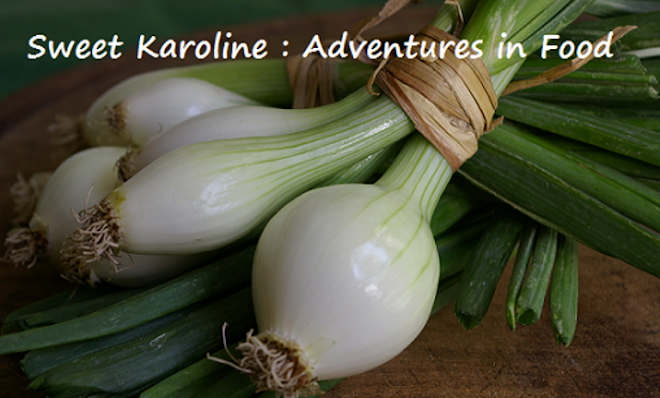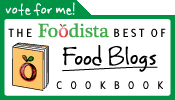
With all the hoopla of my mom's milestone birthday celebration and a dear friend's bachelorette party/shower, I neglected to post my work that appeared in last week's Boston Globe. This article was a milestone of its own: my first lead story! Through a serious amount of digging, I was able to unearth quite a lot of information about the history of this dynamic duo. Today, there are chefs across the country doing really fun stuff with this comfortable, old standby. Be sure to click on the link below; there are a few great pics of the pairing - including an ad from Velveeta dating back to the 1950s. Plus, the site displays several variations on the grilled cheese theme.
Soup and Sandwich 2.0
It has all the qualities of classic comfort food: a steaming mug of sweet tomato soup served with a sandwich of melting cheese inside slices of golden buttery toast. Moms have been presenting grilled cheese sandwiches to happy children for decades.
Once relegated to kitchen tables, school cafeterias, lunch counters, and diners, this satisfying combo is making a comeback in popular culture and high-end restaurants, and is poised to become the new mac and cheese. Slices of processed cheese and ordinary white bread have been replaced by farmstead favorites and chewy or rich loaves. The top lunchtime seller at Woodward in the Ames Hotel consists of thick brioche, comté and Gruyere cheeses, tomato, and applewood smoked bacon. For dipping or slurping there’s a side of fresh tomato soup. “The brioche sops it up nicely,’’ says executive chef Mark Goldberg. At the gastropub Garden at the Cellar, Iggy’s dense pullman is grilled with Vermont cheddar, and at Restaurant Dante, every Tuesday night you can order a different $2 grilled Italian-inspired cheese sandwich. Owner Dante de Magistris says, “I love all types of food, but crunchy bread and oozy cheese is crazy satisfying.’’
Rick Katz sees a similar response. At Picco, diners indulge in Clear Flour’s sourdough bread slathered with a five-cheese mornay sauce, filled with cheddar and brushed with butter. “We offer more interesting panini,’’ says the South End restaurateur, “but none sell as well as grilled cheese.’’
Some say that the young renegade chefs of the last decade who wanted to stamp a menu with their own imprint brought the old-fashioned dish back in the limelight. Others credit celebrity chef Thomas Keller. In 1999, he described a grilled farmhouse cheddar and Early Girl tomato consomme in “The French Laundry Cookbook.’’ He describes it as “a dish straight out of American childhood, refined into haute cuisine.’’
If Keller is indeed the source of the updated classic, he’s spawned a host of food trucks and eateries across the country. San Francisco residents Tiffany Lam and Alex Rando operate a weekly street cart they call Toasty Melts, which offers seven variations and notifies customers of their whereabouts via Twitter (the most popular is ABC — apple, bacon, and cheddar). Instead of soup, Lam makes tomato sauce, which patrons use for dipping. Ohio is home to both Tom + Chee (a booth in Cincinnati’s Fountain Square) and Melt Bar & Grilled in Cleveland, where a tattoo of the restaurant’s grilled cheese logo earns patrons a 25 percent discount for life. Portland, Ore., has the Grilled Cheese Grill, a food stand where patrons dine at picnic tables or in a school bus. In Los Angeles, you can find the Grilled Cheese Truck, where hot weather calls for tomato soup shooters instead of soup in mugs.
All are playing to an audience primed to enjoy the duo. Americans consume an estimated 2 billion grilled cheese sandwiches every year, often with a serving of tomato soup. In its most iconic form, it is simply two slices of white bread, one slice of American cheese, a pat of butter, and a can of Campbell’s condensed tomato soup thinned with milk or water.
The combination is a post-World War II phenomenon, but both go back centuries. Winchester food historian Barbara Haber thinks it may have nomadic roots. “I picture ancient shepherds toasting chunks of bread and cheese over an open fire,’’ she writes in an e-mail. In the 18th and 19th centuries, Englishmen dined on baked cheese sandwiches. In “The Queen Cookery Books’’ series, S. Beaty-Pownall describes a popular technique in London at the turn of the 20th century: “Cut slices from some rich cheese, about one-third of an inch thick, and place these between slices of brown bread and butter . . . set these sandwiches in the oven and serve at once.’’
The British were not the only fans of gooey cheese and crisped bread. Jacky Robert, the French-born chef and owner of Petit Robert Bistro restaurants, describes the origins of croque-monsieur, which he was raised on. “A croque was a traditional way to serve old bread in Provence by dipping it in egg and herb,’’ he writes in an e-mail, then it was “pan fried to give a crunch.’’ The dish, called croque, was topped with ham and comte cheese in the early 1900s. When a waiter served it to an elegant gentleman, he would say, “Voici votre croque, monsieur.’’ (Here is your croque, sir.)
Tomato soup had a rockier entry into culinary annals. The red fruits, once believed to be poisonous, gained popularity in European kitchens in the 19th century and in the fashionable cream soups of the time.
Enter Campbell’s Soup Co., based in New Jersey and originally known as the Joseph Campbell Preserve Co. John T. Dorrance developed the formula for condensed soups in 1897; tomato soup was among the original five offerings. The idea was that homemakers needed only a can of water to thin the soup for serving. Lighter cans were cheaper to ship.
Around the same time, James L. Kraft, frustrated by the short shelf life of the cheese he peddled, turned it into “processed’’ cheese, which sustained soldiers in both world wars and was sold to the public in the 1920s as Kraft American Cheese. It was not until the 1940s that a growing fondness for sandwiches inspired a pre-sliced version of the cheese. Another 25 years passed before Kraft marketed individually wrapped singles. Wonder Bread unburdened homemakers who had to slice their own loaves by introducing packaged sliced bread in 1925.
Soldiers arrived home from war with a taste for processed foods. Lynne Olver of www.foodtimeline.org writes, “Government issue cookbooks tell us World War II Navy cooks broiled hundreds of ‘American cheese filling sandwiches,’ ’’ which she describes as “economical, easy to make, [and] met government nutrition standards.’’
The transition to the home front was easy. “These sandwiches were open-faced and usually made with prepackaged grated ‘American’ cheddar cheese,’’ Olver writes. “It wasn’t long before school cafeterias and other institutional kitchens followed suit. The usual accompaniment? Tomato soup.’’
Taking note of the trend, Campbell’s and Kraft began joint ads in the 1950s. Velveeta’s suggested, “to make the sandwiches into a main dish, serve them in hot, condensed tomato soup.’’ Company cookbooks emerged with serving suggestions. Campbell’s published “Modern Meal Planning With Soup,’’ wherein an open-faced, broiled cheese sandwich with bacon is partnered with tomato soup. Campbell’s representative John Faulkner calls it “a natural marketing opportunity.’’
Today, Facebook lists more than six pages for grilled cheese and/or tomato soup, some with over 300,000 fans. Medway native Tim Walker founded the Grilled Cheese Invitational in Los Angeles in 2003. The contest is held each year in April. At last week’s competition, 300 contestants and 8,000 spectators gathered to celebrate the “healing power of the combination of grilled cheese and tomato soup.’’ Walker’s favorite when he’s feeling “frilly’’ begins with slices from an olive loaf sandwiched with cave-aged Gruyere and caramelized onions. He describes it as a sandwich that makes you “push away from the table.’’
Lunch counters, of course, have remained loyal to the soup and sandwich pair. At Silvertone in Downtown Crossing, 60 percent of diners order tomato soup and grilled cheese. General manager Mary Palmer grew up on it in Rochester, N.Y. “We had to walk to school, and even though it was only about four blocks away, we’d be frozen by the time we got home.’’ They took off their wet clothes and mittens and sat down to soup and sandwiches.
Boston native Sol Sidell, owner of South Street Diner, has been grilling cheese for 14 years. His version uses American cheese and Italian bread. He offers the combo most of the day, and grilled cheese on its own 24/7. Sidell’s memories are also of the bitter cold, when he’d be offered his mom’s warming lunch of soup and grilled cheese.
“You can be the richest or the poorest person in the world and still enjoy it,’’ says Sidell. “It reminds you of where you came from.’’
(The photo above is from the 1960s, provided by Campbell's Soup Co.)








No comments:
Post a Comment